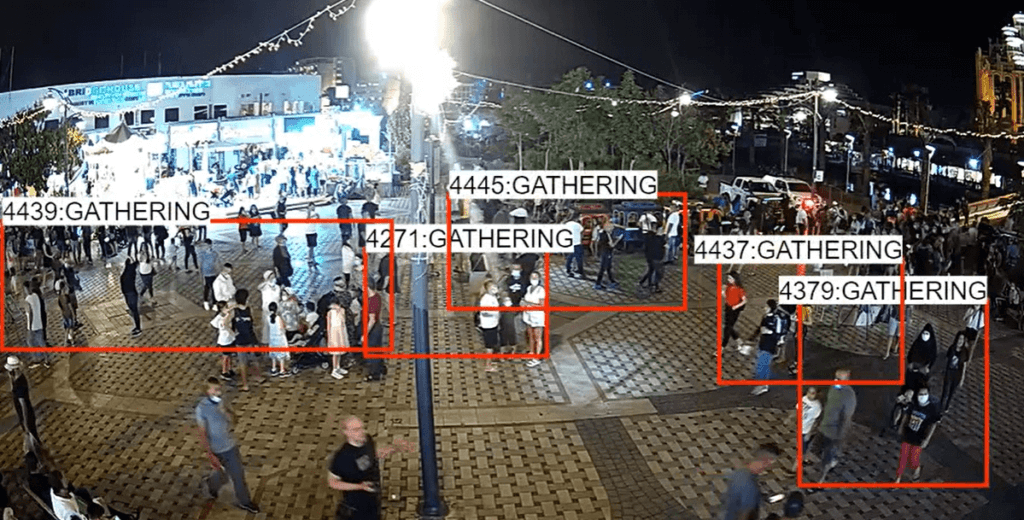May 6, 2021 5:41 am

As businesses start to re-open and communities re-connect, cities face a delicate balance between assuring public safety and supporting long-term recovery.
With budgets stretched, a key trend is for local governments to use the infrastructure that they already have. New video analytics tools offer a cost-efficient means to monitor COVID safety measures using existing networks of street cameras.
Globally, there are already 770 million CCTV cameras in use, and almost half of these are outside China, with the US, Asia and the Europe being key markets. London, for instance, has over 627,000 cameras (67.47 cameras per 1,000 people), Singapore has 86,000 (14.49 per 1,000) and Sydney has 60,000 (12.18 per 1,000). Investment continues and by the end of this year, the total number of cameras worldwide could reach 1 billion.
For most cities these cameras are used to investigate incidents after they have happened, and proactive monitoring becomes more challenging for staff as the number of cameras increases.
The application of video analytics makes camera networks a much more powerful tool to assist cities’ COVID recovery strategy by giving access to real-time insights without the need to invest in further equipment.
Video analytics in action
Several new examples of cities using video analytics have emerged during the pandemic. Cannes used AI to detect adherence to mask-wearing and social distancing rules. Transport for Greater Manchester has been analysing CCTV footage to understand social distancing behaviour and assess how infrastructure is used. And Barcelona deployed AI to prevent beach crowding by analysing the proportion of available sand. London has used data from cameras, sensors and point of sale counts to understand ‘busyness’.
Many of these initiatives have focused on using insights from the data to inform policy, and shape messaging and signage. Others support trip planning and crowd control, enabling cities to get ahead of issues before they escalate and helping to instil confidence in public safety.
The fast-changing pandemic has highlighted that actionable insights are increasingly important. The most advanced video analytics tools use artificial intelligence (AI) to provide real-time alerts when events of interest occur. They also deploy sophisticated context analysis to help cities refine their response further. For instance, leading systems can detect if someone isn’t wearing a mask but they will only generate an alert if there are other people around. This frees up staff time and ensures a proportionate response from local governments.
Crucially, as these tools become more advanced, solutions are now available which allow cities to get more detailed insights from their camera infrastructure while prioritising privacy. These systems, such as the technology provided by Viisights, recognise patterns of behaviour without the need for risky and intrusive facial recognition or the collection of any personal data.
Case study: Eilat
Eilat in Israel recently fast-tracked its deployment of real-time video intelligence to prepare for large numbers of tourists during the Passover and upcoming holiday season.
Behavioural analytics tools from Viisights are integrated into the city’s extensive surveillance system, which includes over 300 cameras that are monitored at a centrally located command and control centre. The software monitors hundreds of cameras in real-time and alerts staff when unusual or pre-defined events are detected.
Like many cities, COVID safety is a priority as normal life in Israel resumes after a successful vaccination drive.
The system generates alerts on events of interest such as crowding in areas and locations where COVID-19 guidelines are not being followed. It can also predict gatherings by monitoring traffic and people’s movement towards a certain location, helping the city respond before problems escalate.
As well as supporting COVID-19 safety, the system is an important tool to help Eilat deliver on Israel’s City without Violence initiative. Unlike conventional video analytics that use pixel technology to recognise and classify objects, the Viisights tool uses behavioural analytics that can detect the difference between people hugging versus fighting, for instance.
Eli Lankri, Deputy and Acting Mayor of Eilat leading the Israel’s Smart City programme, said: “As a city that ranks high in Israel’s smart cities index, we’re proud of this innovative system which will enable us to maintain the public’s safety and security, and its health under the current COVID-19 pandemic.”
Tips for local governments